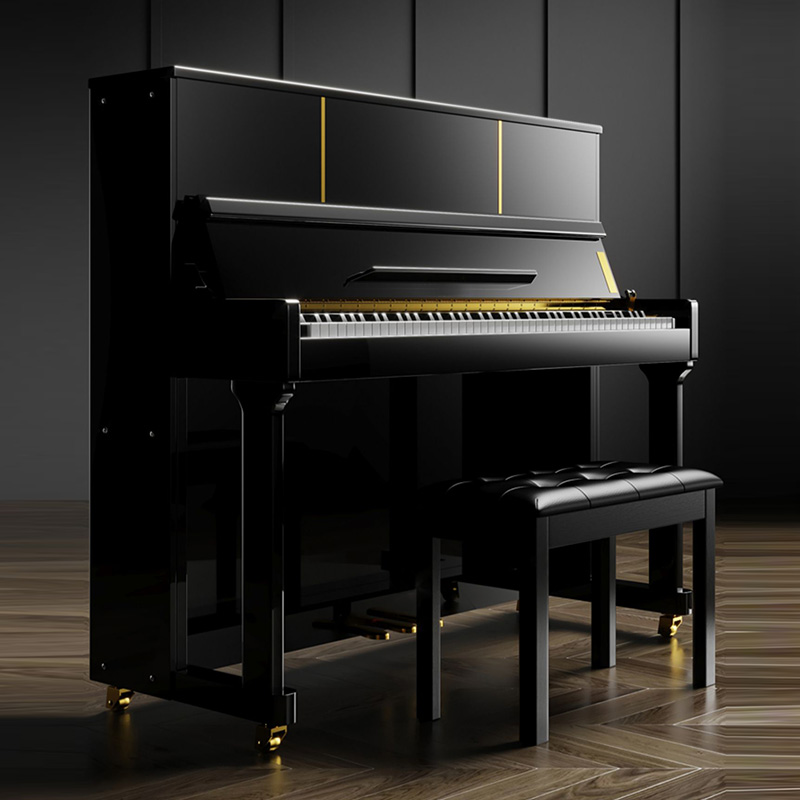Are Piano and Keyboard the Same?
Table of Contents
- Introduction
- Understanding the Piano
- The Traditional Piano
- Acoustic vs. Digital Pianos
- Features and Mechanisms of a Piano
- Unveiling the Keyboard
- Types of Keyboards
- Electronic Keyboards
- Features and Functions of a Keyboard
- Differences Between Pianos and Keyboards
- Size and Portability
- Sound Quality
- Touch and Feel
- Versatility and Features
- Choosing Between a Piano and a Keyboard
- Conclusion
- FAQs
- Can a keyboard be a substitute for a piano?
- Which one is better for beginners, a piano or a keyboard?
- Can you learn piano on a keyboard?
- Are keyboards more affordable than pianos?
- What should I consider when buying a piano or keyboard?
Introduction
Many people often wonder whether a piano and a keyboard are the same instrument. While they share some similarities, they also have distinct differences that set them apart. In this article, we will explore the characteristics of both pianos and keyboards, highlighting their similarities and differences. By the end, you will have a clear understanding of these musical instruments and be able to make an informed decision when choosing between them.
Understanding the Piano
The Traditional Piano
The piano is a classical musical instrument that has been around for centuries. It is an acoustic instrument with a rich history and timeless appeal. Traditional pianos consist of a set of 88 keys, including black and white keys, which produce sound by striking strings with hammers when the keys are pressed. The sound resonates through a soundboard and is amplified by the piano’s wooden body.
Acoustic vs. Digital Pianos
In recent years, digital pianos have gained popularity as an alternative to acoustic pianos. Digital pianos replicate the sound and feel of an acoustic piano but use electronic technology to produce the sound. They offer additional features such as headphone connectivity, different instrument sounds, and recording capabilities. Digital pianos are often more compact and portable compared to their acoustic counterparts.
Features and Mechanisms of a Piano
Pianos are known for their intricate mechanisms and craftsmanship. The keys are weighted and offer varying levels of resistance, allowing for nuanced playing and expression. The pedals, including the sustain pedal, soft pedal, and sostenuto pedal, further enhance the pianist’s control over the sound. The strings inside the piano are tuned to specific pitches, creating a harmonic and resonant tone.
Unveiling the Keyboard
Types of Keyboards
Keyboards, on the other hand, refer to a broad category of electronic musical instruments. They come in various shapes and sizes, ranging from small portable keyboards to larger professional synthesizers. Keyboards can imitate the sound of different instruments, including piano, organ, strings, and more.
Electronic Keyboards
Electronic keyboards rely on digital sound synthesis to produce music. They utilize electronic circuits and speakers to generate sound, and many of them offer a wide range of features and customization options. Some keyboards come with built-in speakers, while others require external amplification. They are often lightweight and easy to transport, making them popular among musicians who perform or travel frequently.
Features and Functions of a Keyboard
Keyboards offer a wide array of features and functions. They typically come with different sound presets, allowing musicians to choose from a variety of instrument sounds. Keyboards often include built-in rhythms, backing tracks, and accompaniment features, making them versatile for playing different music genres. Additionally, many keyboards have MIDI connectivity, enabling them to connect with computers and other devices for recording and music production purposes.
Differences Between Pianos and Keyboards
Although pianos and keyboards share some similarities, they have distinct differences that set them apart. Here are some key factors to consider:
1. Size and Portability
Pianos are large and bulky instruments that require a dedicated space in your home. They are heavy and not easily portable. On the other hand, keyboards are compact and lightweight, making them portable and suitable for musicians who need to travel or perform in different locations.
2. Sound Quality
Pianos produce rich, authentic, and resonant sounds due to their acoustic nature. The hammer action and string vibrations create a unique tone that is difficult to replicate. While keyboards have improved in sound quality over the years, they still cannot completely match the depth and complexity of a well-maintained acoustic piano.
3. Touch and Feel
Pianos have weighted keys that mimic the touch and feel of an acoustic piano. The keys offer resistance and respond to the nuances of your playing, allowing for a more expressive performance. Keyboards, on the other hand, have lighter keys and may not provide the same level of tactile feedback as pianos. However, some high-end keyboards come with weighted or semi-weighted keys to simulate the piano playing experience.
4. Versatility and Features
Keyboards excel in versatility and features. They offer a wide range of sounds, effects, and customization options. With the press of a button, you can switch between different instrument sounds or add layers of effects to enhance your performance. Pianos, on the other hand, have a more limited range of sound options but focus on delivering the pure and authentic piano playing experience.
Choosing Between a Piano and a Keyboard
When deciding between a piano and a keyboard, consider your specific needs and circumstances. If you are a serious pianist or classical musician who values the authentic piano playing experience and sound quality, investing in an acoustic or digital piano would be the best choice. However, if you prioritize portability, versatility, and the ability to explore a wide range of sounds and features, a keyboard may be more suitable for you.
Ultimately, the decision boils down to personal preference, budget, and the goals you have as a musician. Assess your requirements, try out different instruments if possible, and make an informed decision based on what aligns with your musical aspirations.
Conclusion
In conclusion, while the piano and keyboard share similarities as musical instruments, they have distinct characteristics that differentiate them. Pianos offer a rich and authentic playing experience with their acoustic nature and intricate mechanisms. Keyboards, on the other hand, provide portability, versatility, and a wide range of features and sounds. When choosing between the two, consider factors such as size, sound quality, touch and feel, and your specific musical goals.





